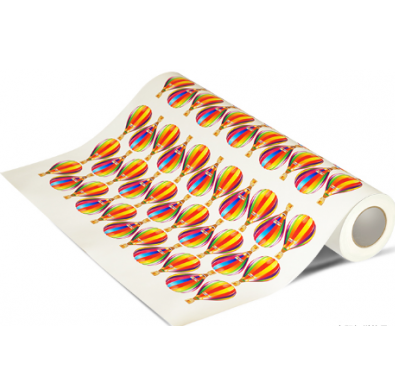The development of decorative coating technology is advancing by leaps and bounds, and ion-plating decorative coating has been widely used in watch cases, watch straps, mobile phone cases, spectacle frames, golf equipment, accessories, architectural hardware, daily hardware and other products. The ion plating decorative film gives the product surface metallic texture and rich colors, and improves wear resistance, corrosion resistance and prolongs service life.
With the growing market of ion-plating decorative films, the requirements for film performance are getting higher and higher, and many new problems and challenges have arisen in the manufacturing process. This paper focuses on the new problems encountered in the plating technology in recent years, including the technical confusion caused by the surface decoration treatment of the plated parts, the pinhole corrosion on the surface of the coating, the plasma sheath effect of ion plating, and the development of the color of the film, and discusses the corresponding countermeasures.

1. The new challenge of the surface decoration treatment of the workpiece to the plating process of the ion-plating decorative film
Stainless steel substrates are usually treated with polishing, wire drawing, sandblasting, chemical etching, laser engraving, CNC machine engraving, etc. for surface art treatment, and some are also laser welded, and water-based nickel-chromium layers are electroplated.
Polishing will leave hardened polishing wax on the workpiece; nylon wheel drawing will leave transparent and difficult-to-find polymer compounds on the drawing groove; grinding wheel drawing may leave abrasive particles and binders, or cause friction and overheating. Oxide skin; sandblasting will have ceramic grit, glass grit and alumina grit remaining embedded on the surface; chemical etching will have corrosion products remaining in the corrosion pit, or residual protective substances for anti-corrosion on other non-corrosive surfaces; laser The engraving process will produce high-temperature oxide scale and ablation substrate debris; CNC machine tool engraving will have high-temperature oxide scale and cutting oil residues, and substrate fragments will be pressed into the substrate; laser welding will also cause high-temperature oxidation, etc.; water method The electroplated chromium layer will generate complex oxides that are difficult to remove. The incomplete removal of contamination caused by these treatments will lead to defects such as sparking during the ion plating process, false adhesion of the coating, film peeling, and uneven color.
In ion plating products, the art treatment method is often not a single, but a combination of various operations, which increases the difficulty of cleaning before plating. The traditional method of ultrasonic degreasing and wax removal is incompetent. To adjust the cleaning process, for different pollution, you can choose mechanical cleaning, gas phase cleaning, cleaning after vacuum heating, cathodic electrolysis, anodic electrolysis, or use targeted cleaning agent, etc. These comprehensive measures can achieve good results, but have not found an ideal solution to some pollution. The recent application of plasma polishing method to pre-plating cleaning is a technique worthy of attention, which has achieved good results in the stripping of some coatings.
2. How ion plating decorative film products cross the threshold of local corrosion
Most of the ion plating decorative films use nitrogen, carbon and oxygen compounds of transition metals (such as Ti, Zr, Cr) or their alloys, as well as amorphous carbon (diamond-like carbon) films. In general, these compounds themselves are relatively chemically inert and have good corrosion resistance. However, in recent years, some decorative coating products, including watch parts, mobile phone cases, golf heads, etc., have failed to pass the artificial sweat corrosion test or the neutral salt spray corrosion test, which has attracted people's attention!
In fact, this problem has existed for a long time, but it has not attracted attention. The corrosion of decorative coating products is not only the corrosion resistance of the coating itself, but also the system corrosion of decorative coating + substrate. Many research works have shown that the ion plating decorative coating has good corrosion resistance. It is plated on a metal (such as stainless steel) substrate, which improves the overall uniform corrosion resistance of the substrate. However, the decorative coating is very thin and inevitably has surface defects, such as Microcracks, micropores, pinholes, columnar grain boundaries, arc-deposited macroscopic particles, etc. Corrosive media can travel through the coating to the substrate through the channels created by these defects.
The plating layer→corrosion medium→substrate forms a corrosion cell, and the plating layer and the substrate become the electrode corners, thus resulting in electrochemical corrosion. Generally, the chemical inertness of the coating is higher than that of the substrate, the electrode potential of the coating is higher than that of the substrate, and the substrate is oxidized and corroded. Localized corrosion or pinhole corrosion occurs on coated products, and is even more severe than uncoated products. Local corrosion has also become the basis for judging whether the coating product is qualified. The market evaluates the corrosion resistance of coating products, generally random sampling is carried out for artificial sweat corrosion test and salt spray corrosion test. Given that the current decorative coating is so thin (about 1 micron) and the current level of ion coating technology, the pinhole rate of the coating is relatively high, so the risk of failing the corrosion test of the coating product always exists.
The key measures to improve the local corrosion resistance of the system are to improve the density of the coating and eliminate the surface defects that lead to the substrate. A variety of process methods have been studied: thickening the coating, using high corrosion-resistant substrate materials, depositing a corrosion-resistant dense transition layer, additional plasma etching in the middle of the coating, multi-layer structure, substrate plasma nitriding pretreatment, etc. The above PVD methods can be improved at present. The system is resistant to localized corrosion. The water electroplating transition layer is more reliable but not environmentally friendly. A non-PVD method of applying UV oil, although this method is controversial, it is effective.
